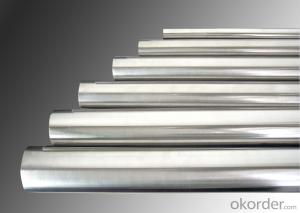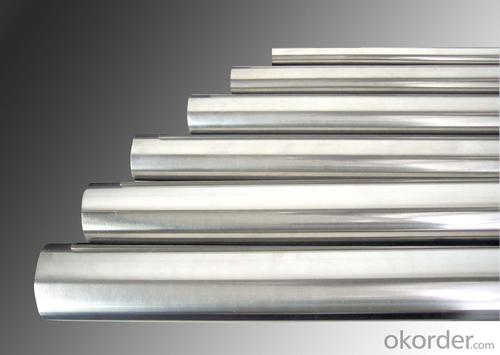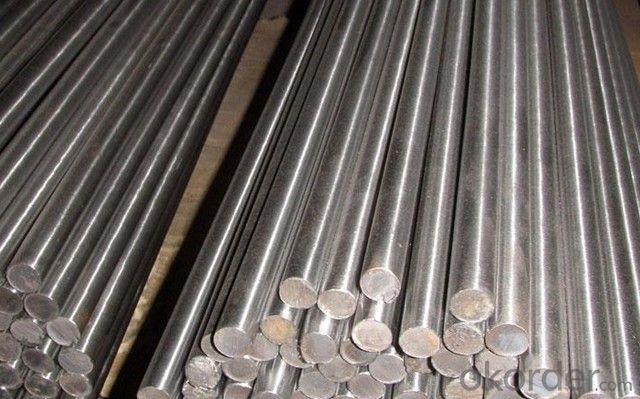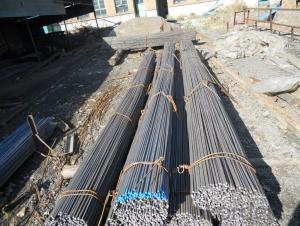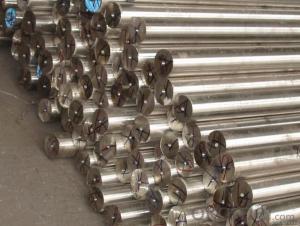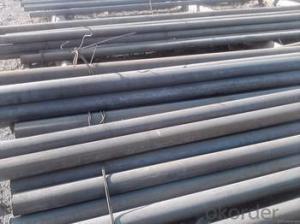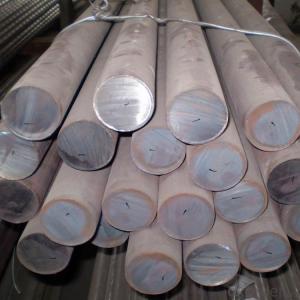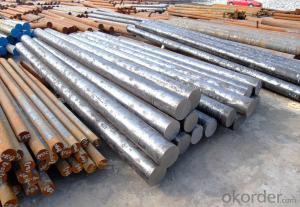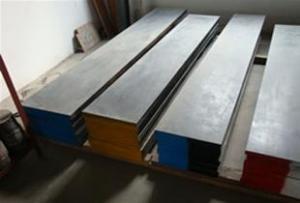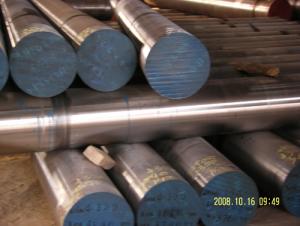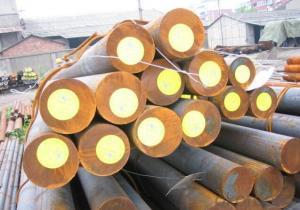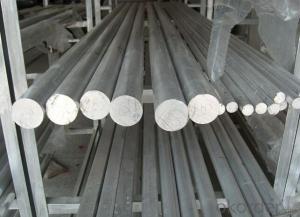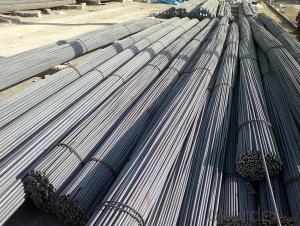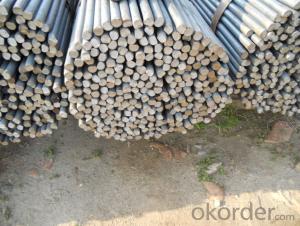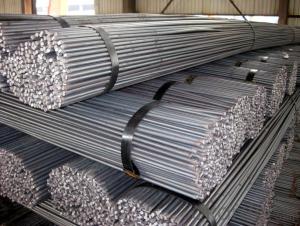0Cr19Ni513Mo3 Stainless High Quality Tool Steel
- Loading Port:
- China main port
- Payment Terms:
- TT or LC
- Min Order Qty:
- 25 m.t.
- Supply Capability:
- 10000 m.t./month
OKorder Service Pledge
OKorder Financial Service
You Might Also Like
Product Description:
OKorder is offering Tool Steel at great prices with worldwide shipping. Our supplier is a world-class manufacturer of steel, with our products utilized the world over. OKorder annually supplies products to European, North American and Asian markets. We provide quotations within 24 hours of receiving an inquiry and guarantee competitive prices.
Product Applications:
High Quality Bearing steel is used for manufacturing ball, roller bearing steel and rings. Bearing in work is under great pressure and friction, so have high demands bearing steel and hardness and resistance, and high elastic limit.
Bearing steels are used for ball and roller bearing applications and are comprised of low carbon steels and high carbon through harden able steel.
For example, bearing ring, steel rolling mill, machinery, 100Cr6 bearing steel ball is widely used in high-speed and low-noise bearing, bicycle, motorcycle, automobile, bags electronically.
Product Advantages:
OKorder's Tool Steel are durable, strong, and resist corrosion.
Main Product Features:
· Premium quality
· Prompt delivery & seaworthy packing (30 days after receiving deposit)
· Corrosion resistance
· Can be recycled and reused
· Mill test certification
· Professional Service
· Competitive pricing
Product Specifications:
Grade | bearing steel EN-31 |
Dimensions | Diameter: 20-280mm Length: 2000-5800mm |
Shape | Round Bar |
Type | High chromium bearing steel |
HBS | <220< span=""> |
Standard | AISI |
Technique | Hot Rolled |
Chemical Composition of High Quality Bearing Steel
C | S | P | Si | Mn |
0.95-1.05 | ≤0.025 | ≤0.025 | 0.15-0.35 | 0.25-0.45 |
Cr | Mo | Ni | Cu | Ni+Cu |
1.40-1.65 | ≤0.10 | ≤0.30 | ≤0.25 | ≤0.50 |
Note of High Quality Bearing Steel
1 The technical workers we employed are the ones with many years’ working experience, who know the technology procedures very well.
2 We will strictly inspect our production that we sold according to the customer’s request.
3 Our steel reaches international quality standards. Besides, our company is equipped with large-sized vertical saw machines, horizontal saw machines, milling machines, grinding machines and other advanced equipment. All our products are carried out hardness tests, such as the ultrasonic flaw detection before shipment. Therefore, there is no quality problem. With more competitive price than other suppliers, our steel has good sales in the markets of North America, South America, East Europe, Southeast Asia, Africa, Oceania, the Middle East, East Asia and West Europe.
FAQ:
Q1: Why buy Materials & Equipment from OKorder.com?
A1: All products offered byOKorder.com are carefully selected from China's most reliable manufacturing enterprises. Through its ISO certifications, OKorder.com adheres to the highest standards and a commitment to supply chain safety and customer satisfaction.
Q2: How do we guarantee the quality of our products?
A2: We have established an advanced quality management system which conducts strict quality tests at every step, from raw materials to the final product. At the same time, we provide extensive follow-up service assurances as required.
Q3: How soon can we receive the product after purchase?
A3: Within three days of placing an order, we will begin production. The specific shipping date is dependent upon international and government factors, but is typically 7 to 10 workdays.
Q4: What makes stainless steel stainless?
A4: Stainless steel must contain at least 10.5 % chromium. It is this element that reacts with the oxygen in the air to form a complex chrome-oxide surface layer that is invisible but strong enough to prevent further oxygen from "staining" (rusting) the surface. Higher levels of chromium and the addition of other alloying elements such as nickel and molybdenum enhance this surface layer and improve the corrosion resistance of the stainless material.
Q5: Can stainless steel rust?
A5: Stainless does not "rust" as you think of regular steel rusting with a red oxide on the surface that flakes off. If you see red rust it is probably due to some iron particles that have contaminated the surface of the stainless steel and it is these iron particles that are rusting. Look at the source of the rusting and see if you can remove it from the surface.
Images:
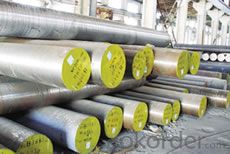
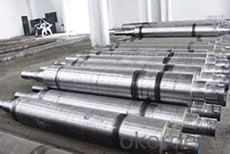
- Q: How are steel round bars stored?
- To ensure the safety and easy accessibility of steel round bars, they are typically stored in a manner that prioritizes these factors. One common storage method involves horizontally stacking the bars on a pallet or rack system, often bundling them together and securing them with straps or wire to prevent rolling or shifting. Another option is to store the bars vertically in racks, placing each bar in a designated slot to avoid contact or damage. In both cases, maintaining proper spacing between the bars is crucial to allow for sufficient air circulation and prevent potential corrosion. Additionally, it is essential to store steel round bars in a dry and covered area to shield them from moisture, dust, and other environmental elements. Proper labeling and inventory management systems are also of utmost importance to ensure easy identification and retrieval of the bars when necessary.
- Q: What is a steel round bar?
- A steel round bar, a lengthy metal rod with a circular shape, is usually made of strong and durable steel, an alloy composed mainly of iron and carbon. The round bar finds wide usage in industries like construction, manufacturing, and engineering, thanks to its flexibility and dependability. It is frequently employed as a structural element in buildings, as reinforcement or support in concrete structures, or as a part in machinery and equipment. The round shape enables effortless handling, machining, and welding procedures. Steel round bars are available in different diameters and lengths, and they can be further tailored or manufactured to suit particular project needs.
- Q: What is the difference between a seamless and a precision ground steel round bar?
- A solid cylindrical steel billet is heated and pierced to create a hollow tube-like structure, resulting in a seamless steel round bar. This manufacturing method guarantees a uniform outer diameter throughout the entire length of the bar, making it ideal for applications that necessitate a smooth surface finish and high dimensional accuracy. Industries such as oil and gas, automotive, and aerospace commonly employ seamless round bars. On the contrary, a precision ground steel round bar is produced by subjecting a hot-rolled or cold-drawn steel bar to precise grinding processes. These processes eliminate any surface imperfections, achieve meticulous dimensional tolerances, and provide a polished and smooth finish. Precision ground round bars are typically utilized in applications that require strict tolerances, superior surface finish, and consistent dimensions, such as in the production of machinery parts, tools, and components. In conclusion, the primary distinction between a seamless and a precision ground steel round bar lies in the manufacturing process and the resulting characteristics. Seamless round bars are formed from a hollow tube-like structure, ensuring a consistent outer diameter, whereas precision ground round bars are created by grinding a solid steel bar to achieve tight tolerances and exceptional surface finish. Both types of round bars offer their own advantages and find application in various industries based on specific requirements.
- Q: What is the maximum length of a steel round bar?
- The length of a steel round bar can vary depending on several factors, including the bar's diameter, the manufacturing capabilities of the steel supplier, and transportation restrictions. Typically, steel round bars are made in standard lengths ranging from 6 to 12 meters (20 to 40 feet). However, it is possible to create longer bars through specialized processes or by combining multiple bars using welding techniques. In certain cases, it is possible to order custom-made steel round bars that exceed standard lengths, but this would necessitate making specific arrangements with the supplier and considering logistical and handling aspects during transportation. Ultimately, the maximum length of a steel round bar is determined by practical limitations and the specific requirements of the project or application.
- Q: How do you prevent steel round bars from rusting during transportation?
- There are several effective measures that can be taken to prevent rusting of steel round bars during transportation. Firstly, it is crucial to properly package the steel round bars. This involves securely wrapping and sealing them using moisture-resistant materials like plastic or shrink wrap. This packaging will act as a barrier against moisture and prevent direct contact with air. Secondly, the inclusion of desiccants inside the packaging can help absorb any moisture that may be present. Desiccants such as silica gel packets or moisture-absorbing clay will create a dry environment around the steel bars, reducing the chances of rust formation. Another effective method is to use VCI (Volatile Corrosion Inhibitor) packaging. VCI materials release a protective vapor that forms a thin layer on the steel surface, inhibiting corrosion. VCI films or papers can be utilized to wrap the steel round bars, providing long-lasting rust protection. Proper storage conditions are also crucial during transportation. The steel round bars should be stored in a dry and well-ventilated environment, away from rain, humidity, and extreme temperature fluctuations. If possible, they should be stored in a covered and climate-controlled area to minimize the risk of rust formation. Regular inspection and maintenance of the steel round bars during transportation is essential. This ensures that the packaging remains intact and no moisture has seeped in. If any damage or signs of moisture are detected, immediate action should be taken to rectify the issue and prevent rust from spreading. By implementing these preventive measures, the risk of rust formation on steel round bars during transportation can be significantly reduced, guaranteeing that they arrive at their destination in optimal condition.
- Q: Are steel round bars suitable for machining operations?
- Yes, steel round bars are suitable for machining operations. Steel is known for its high strength and durability, making it an excellent material for various machining processes. Steel round bars can be easily shaped, cut, drilled, and turned to create precise components or parts. Machining operations such as milling, drilling, and turning can be efficiently performed on steel round bars to achieve the desired shape, size, and finish. Additionally, steel round bars offer good dimensional stability and excellent mechanical properties, allowing for accurate and consistent machining results. Overall, steel round bars are a reliable choice for machining operations in various industries including automotive, aerospace, construction, and manufacturing.
- Q: What is the difference between a smooth and a ribbed steel round bar?
- A smooth steel round bar and a ribbed steel round bar differ in their surface texture and purpose. A smooth steel round bar has a uniform and even surface without any ridges or indentations. This type of bar is typically used in applications where a smooth and polished appearance is desired, such as in decorative or architectural projects. Smooth bars are also commonly used in machining processes where a smooth surface is required for precision and accuracy. On the other hand, a ribbed steel round bar features raised ridges or ribs along its length. These ribs provide improved grip and traction, making ribbed bars ideal for applications that require a high level of strength and stability. Ribbed bars are commonly used in the construction industry for reinforcing concrete structures such as buildings, bridges, and highways. The ridges on the bar increase the bonding strength between the concrete and the steel, enhancing the overall structural integrity. In summary, the main difference between a smooth and a ribbed steel round bar lies in their surface texture and intended use. While smooth bars are used for their polished appearance and precision machining, ribbed bars are designed to provide enhanced grip and reinforcement in concrete structures.
- Q: Three - grade thread Phi 10 steel can replace a grade Phi 12 round bar? Which elder knows, trouble pointing.
- According to the substitution of steel bars, one method, equal strength substitution, equal area substitution and equal root substitution can be obtained by substitution. Three grades of thread Phi 10, steel replaced by a grade Phi 12 of the round steel, I think it may appear: does not meet the minimum reinforcement ratio requirements and reinforcement construction regulations. Don't change it for the best. But must change, must pass the design.
- Q: What is the typical lead time for manufacturing steel round bars?
- The typical lead time for manufacturing steel round bars can vary depending on several factors, such as the quantity and size of the bars, the complexity of the manufacturing process, and the availability of raw materials. However, a general estimate for lead time could range from a few weeks to a couple of months. It is always best to consult with the specific manufacturer for an accurate timeframe.
- Q: What is the maximum length available for steel round bars?
- The maximum length available for steel round bars can vary depending on the supplier and the specific requirements, but typically it can range from 12 to 24 feet.
Send your message to us
0Cr19Ni513Mo3 Stainless High Quality Tool Steel
- Loading Port:
- China main port
- Payment Terms:
- TT or LC
- Min Order Qty:
- 25 m.t.
- Supply Capability:
- 10000 m.t./month
OKorder Service Pledge
OKorder Financial Service
Similar products
Hot products
Hot Searches
Related keywords
